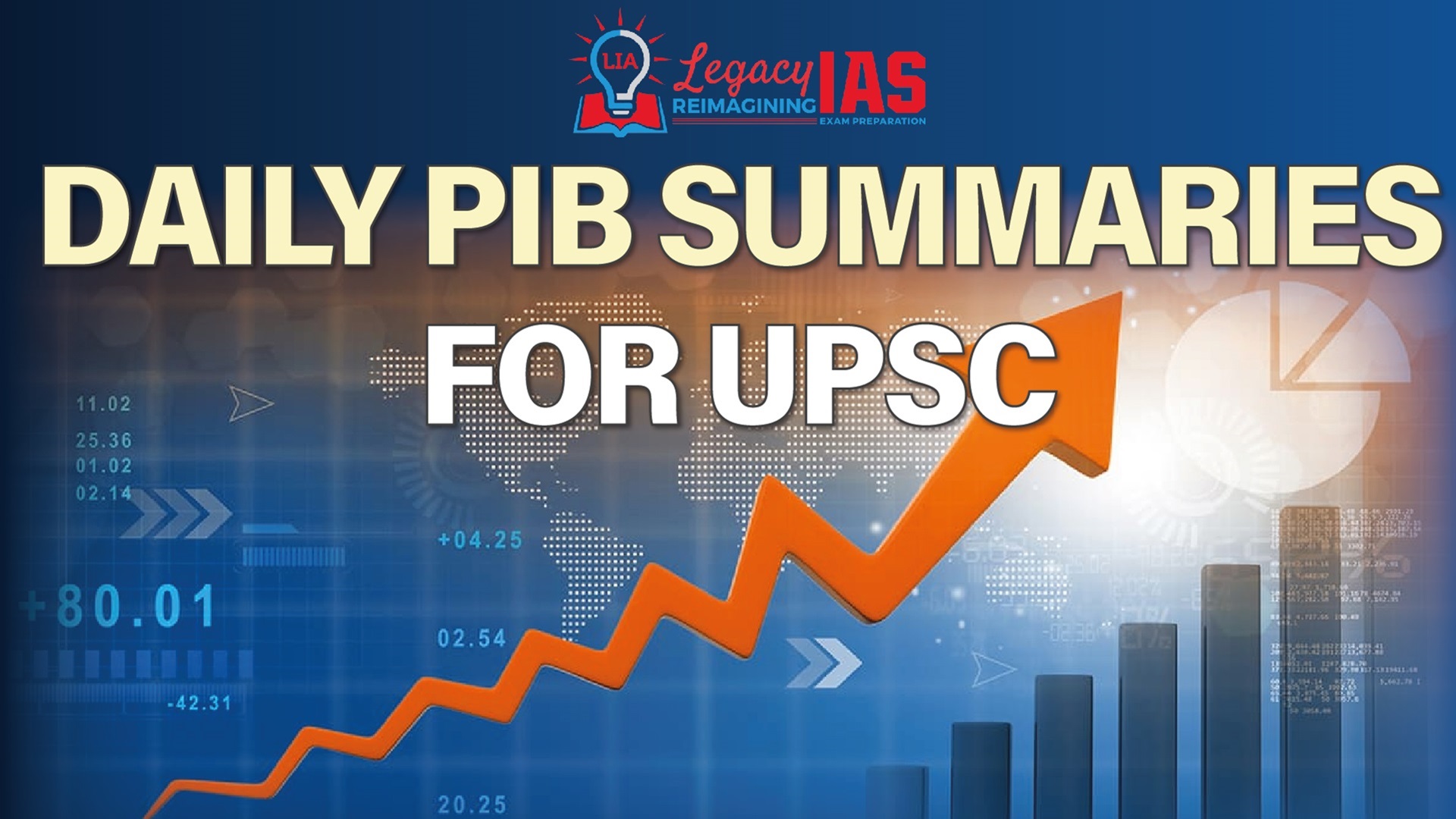Published on Jun 30, 2025
Daily PIB Summaries
PIB Summaries 30 June 2025

Content :
- From Zero-Dose to Zero-Gap: India’s Vaccine Revolution
- India Energy Stack: Transforming Power Through Digital Innovation
From Zero-Dose to Zero-Gap: India’s Vaccine Revolution
Zero-Dose Children & Global Recognition
- Zero-dose children (those receiving no vaccine at all) declined from 0.11% (2023) to 0.06% (2024) of total population.
- India acknowledged as a global exemplar in child health by UN IGME 2024.
- Awarded the Measles and Rubella Champion Award (March 2024) for immunization achievements.
Relevance : GS 2( Health , Governance ,Social Issues)
Maternal & Child Mortality Reduction
- MMR declined to 80 per lakh live births (UN-MMEIG), an 86% drop since 1990, compared to 48% globally.
- Under-Five Mortality Rate (U5MR) fell 78% (vs. 61% globally).
- Neonatal Mortality Rate (NMR) declined 70% (vs. 54% globally).

Universal Immunization Programme (UIP)
- Covers 12 vaccine-preventable diseases (vs. 6 before 2014).
- Annual coverage: 2.9 crore pregnant women & 2.6 crore infants.
- 1.3+ crore immunization sessions held annually by ASHAs/ANMs.
- Tech integration: U-WIN digital platform tracks immunization status.
Key Campaigns & Achievements
- Zero Dose Implementation Plan 2024: Rolled out in 143 districts across 11 states.
- Mission Indradhanush: Since 2014, vaccinated 5.46 crore children & 1.32 crore pregnant women.
- Pulse Polio Campaigns: Maintained polio-free status since 2014.
- Measles-Rubella Campaign 2025 launched for disease elimination.
- Maternal & Neonatal Tetanus eliminated by 2015.
Antigen-wise Coverage & Global Comparison
- India’s DTP-1 coverage: 93%, higher than Nigeria (70%), Pakistan (84%).
- Dropout rate from DTP-1 to DTP-3 reduced from 7% (2013) to 2% (2023).
- DTP-1 and DTP-3 refer to the first and third doses of the Diphtheria, Tetanus, and Pertussis vaccine given to infants under the Universal Immunization Programme;
- Measles coverage improved from 83% (2013) to 93% (2023).
- India’s immunization rates are comparable or superior to high-income countries like Germany, Finland, and Sweden.
Community Engagement & Governance
- Use of mass media, street plays, and community radio to fight vaccine hesitancy.
- Multi-tiered task forces (STFI, DTFI, BTFI) for program monitoring.
- VHNDs (Village Health and Nutrition Days) for outreach and awareness.
Contextualizing India’s Progress
- India’s birth cohort of 2.6 crore exceeds total population of many developed countries.(Birth cohort refers to the total number of babies born in a year)
- Zero-dose % far lower than Yemen (1.68%), Nigeria (0.98%), Pakistan (0.16%).
- India’s high population size and strong delivery systems are crucial to fair comparisons.
Conclusion
- India’s immunization success is a result of sustained policy priority, grassroots outreach, and data-driven strategies.
- It stands as a model for large-scale public health delivery, especially in low-resource and high-population settings.
India Energy Stack: Transforming Power Through Digital Innovation
What is India Energy Stack (IES)?
- A proposed Digital Public Infrastructure (DPI) for the power sector, akin to Aadhaar (identity) and UPI (payments).
- Aims to build a unified, secure, and interoperable digital backbone for India’s electricity ecosystem.
- Will standardize and streamline data and services across generation, distribution, consumption, and policy planning.
Relevance : GS 3(Energy) ,GS 2(Governance)
Why Now? – Context & Need
- India’s power sector is undergoing a paradigm shift due to:
- Rapid growth in renewable energy and electric vehicles.
- Increasing consumer participation in energy markets.
- Demand for grid stability, real-time data, and decentralized management.
- Current system is fragmented, lacks integration, and is digitally siloed.
Key Features of India Energy Stack
- Unique IDs for consumers, assets, and energy transactions.
- Real-time, consent-based data sharing for transparency and privacy.
- Open APIs to ensure system interoperability and innovation.
- Consumer tools to enable energy choice, billing transparency, and market participation.
Strategic Benefits
- DISCOM efficiency: Supports analytics, reduces loss, improves billing and services.
- Renewable energy integration: Enables smart grid operations and distributed energy management.
- Consumer empowerment: Ensures accessible, informed, and participatory energy use.
- Future-ready power services: Prepares infrastructure for smart homes, EVs, and AI-driven energy management.
Implementation Plan
- A 12-month Proof of Concept (PoC) to be conducted with select DISCOMs.
- Includes piloting of Utility Intelligence Platform (UIP) – a modular analytics tool built on IES.
- Initial pilot in Mumbai, Gujarat, and Delhi.
- Development of an India Energy Stack White Paper for public consultation.
- A national rollout roadmap will follow based on pilot learnings.
Governance & Collaboration
- A dedicated Task Force formed by the Ministry of Power:
- Includes experts from tech, energy, and regulatory fields.
- Will guide design, implementation, scaling, and monitoring of IES.
Conclusion
- India Energy Stack is a transformative step to digitize and democratize the power sector.
- Positions India to lead globally in energy-tech integration, improve sustainability, and empower consumers.
- Aligns with India’s $5 trillion economy goal and Net Zero commitments.
